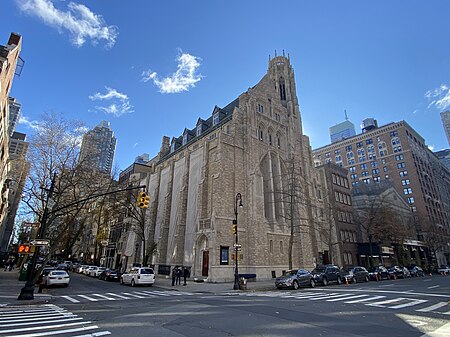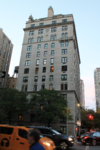Central Presbyterian Church (New York City)

Central Presbyterian Church is a historic congregation on the Upper East Side of Manhattan in New York City, founded by pastor and abolitionist William Patton in 1821. It is a member of the Evangelical Presbyterian Church, and it worships in a Gothic Revival structure completed in 1922 that was originally commissioned and largely funded by John D. Rockefeller, Jr. as Park Avenue Baptist Church. Today, Central is a culturally diverse body of more than 500 people, including seasoned leaders, many families, and a dynamic body of students, young professionals, and artists. The church currently hosts Sunday services as well as lectures, seminars, and chamber music concerts.
Excerpt from the Wikipedia article Central Presbyterian Church (New York City) (License: CC BY-SA 3.0, Authors, Images).Central Presbyterian Church (New York City)
Park Avenue, New York Manhattan
Geographical coordinates (GPS) Address Website External links Nearby Places Show on map
Geographical coordinates (GPS)
| Latitude | Longitude |
|---|---|
| N 40.765694444444 ° | E -73.967194444444 ° |
Address
Central Presbyterian Church
Park Avenue 593
10065 New York, Manhattan
New York, United States
Open on Google Maps








